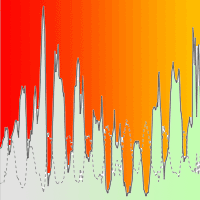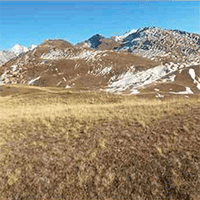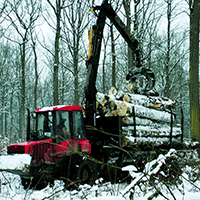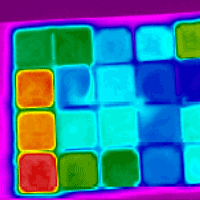
Diurnal surface fuel moisture prediction model for Calabrian pine stands in Turkey
Ertugrul Bilgili (1), Kadir Alperen Coskuner (1), Yetkin Usta (1) , Bulent Saglam (2), Omer Kucuk (3), Tolga Berber (4), Merih Goltas (5)
iForest - Biogeosciences and Forestry, Volume 12, Issue 3, Pages 262-271 (2019)
doi: https://doi.org/10.3832/ifor2870-012
Published: May 03, 2019 - Copyright © 2019 SISEF
Research Articles
Abstract
This study presents a dynamic model for the prediction of diurnal changes in the moisture content of dead surface fuels in normally stocked Calabrian pine stands under varying weather conditions. The model was developed based on several empirical relationships between moisture contents of dead surface fuels and weather variables, and calibrated using field data collected from three Calabrian stands from three different regions of Turkey (Mugla, southwest; Antalya, south; Trabzon, north-east). The model was tested and validated with independent measurements of fuel moisture from two sets of field observations made during dry and rainy periods. Model predictions showed a mean absolute error (MAE) of 1.19% for litter and 0.90% for duff at Mugla, and 3.62% for litter and 14.38% for duff at Antalya. When two rainy periods were excluded from the analysis at Antalya site, the MAE decreased from 14.38% to 4.29% and R2 increased from 0.25 to 0.83 for duff fuels. Graphical inspection and statistical validation of the model indicated that the diurnal litter and duff moisture dynamics could be predicted reasonably. The model can easily be adapted for other similar fuel types in the Mediterranean region.
Keywords
Fuel Moisture Content, Modeling, Drying Rate, Vapor Pressure Deficit
Authors’ Info
Authors’ address
Kadir Alperen Coskuner 0000-0001-5249-1604
Yetkin Usta 0000-0002-0504-6417
Karadeniz Technical University, Faculty of Forestry, 61080 Trabzon (Turkey)
Artvin Coruh University, Faculty of Forestry, 08000 Artvin (Turkey)
Karadeniz Technical University, Faculty of Science, 61080 Trabzon (Turkey)
Istanbul University, Faculty of Forestry, 34100 Istanbul (Turkey)
Corresponding author
Paper Info
Citation
Bilgili E, Coskuner KA, Usta Y, Saglam B, Kucuk O, Berber T, Goltas M (2019). Diurnal surface fuel moisture prediction model for Calabrian pine stands in Turkey. iForest 12: 262-271. - doi: 10.3832/ifor2870-012
Academic Editor
Davide Ascoli
Paper history
Received: May 29, 2018
Accepted: Feb 27, 2019
First online: May 03, 2019
Publication Date: Jun 30, 2019
Publication Time: 2.17 months
Copyright Information
© SISEF - The Italian Society of Silviculture and Forest Ecology 2019
Open Access
This article is distributed under the terms of the Creative Commons Attribution-Non Commercial 4.0 International (https://creativecommons.org/licenses/by-nc/4.0/), which permits unrestricted use, distribution, and reproduction in any medium, provided you give appropriate credit to the original author(s) and the source, provide a link to the Creative Commons license, and indicate if changes were made.
Web Metrics
Breakdown by View Type
Article Usage
Total Article Views: 39412
(from publication date up to now)
Breakdown by View Type
HTML Page Views: 34193
Abstract Page Views: 2454
PDF Downloads: 2154
Citation/Reference Downloads: 2
XML Downloads: 609
Web Metrics
Days since publication: 2009
Overall contacts: 39412
Avg. contacts per week: 137.32
Citation Metrics
Article Citations
Article citations are based on data periodically collected from the Clarivate Web of Science web site
(last update: Feb 2023)
Total number of cites (since 2019): 8
Average cites per year: 1.60
Publication Metrics
by Dimensions ©
Articles citing this article
List of the papers citing this article based on CrossRef Cited-by.
References
Timelag and equililbrium moisture content of ponderosa pine needles. Research Paper INT-202, USDA Forest Service, Ogden, Utah, USA, pp. 1-29.
Gscholar
Equilibrium moisture content of common fine fuels found in southeastern forests. Research Paper SE-74, USDA Forest Service, Asheville, NC, USA, pp. 1-8.
Gscholar
An analysis of the drying process in forest fuel material. In: Proceedings of the International Symposium “Humidity and Moisture”. Washington (DC, USA) 20-23 May 1963, pp. 1-38.
Gscholar
An introduction to regression graphics. John Wiley and Sons, New York, USA, pp. 253.
Gscholar
Forests and forestry in Turkey. General Directorate of Forestry, Ministry of Forestry, Ankara, Turkey, pp. 12.
Gscholar
A critical look at procedures for validating growth and yield models. In: “Modelling Forest Systems” (Amaro A, Reed D, Soares P). Wallingford, UK, pp. 271-293.
Gscholar
Sensitivity analysis of fire behaviour simulations over Spain Wth Wrf-fire. In: Proceedings of the International Conference “Harmonisation within Atmospheric Dispersion Modelling for Regulatory Purposes”. Madrid (Spain) 6-9 May 2013, pp. 138-143.
CrossRef | Gscholar
Weather guide for the Canadian forest fire danger rating system. Canadian Forestry Service Northern Forestry Center, Edmonton, Alberta, Canada, pp. 73.
Gscholar
Rainfall effects on fine forest fuels moisture content. In: “Advances in Forest Fire Research” (Viegas DX eds). Imprensa da Universidade de Coimbra, Portugal, pp. 1256-1263.
Gscholar
Gas exchange in plant communities. In: “Environmental Control of Plant Growth” (Evans LT ed). Academic Press, New York, USA, pp. 95-112.
Gscholar
Water relations of forest fuels. In: “Forest Fires: Behaviour and Ecological Effects” (Johnson EA, Miyanishi K eds). Academic Press, San Diego, USA, pp. 79-149.
Gscholar
Modeling moisture content of fine dead wildland fuels - input to the behave fire prediction system. Research Paper 359, Intermountain Research Station, USDA Forest Service, Ogden, Utah, USA, pp. 1-61.
Gscholar
The moisture content of forest fuels - I. A review of basic concepts. Report no. FF-X-14, Canadian Department of Forest and Rural Development, Forest Fire Research Institute, Ottawa, Ontario, Canada, pp. 47.
Gscholar
Equilibrium moisture contents of some fine forest fuels in eastern Canada. Petawawa Forest Experimental Station, Chalk River, Ontario, Canada, pp. 11.
Gscholar
A method of computing fine fuel moisture content throughout the diurnal cycle. Information Report PS-X-69, Canadian Forest Service, Chalk River, Ontario, Canada, pp. 15.
Gscholar
Development and structure of the Canadian forest fire weather index system. Technical Report PS-X-35, Ottawa, Ontario, Canada, pp. 37.
Gscholar
Atmospheric science: an introductory survey. Academic Press, San Diego, CA, USA, pp. 504.
Gscholar

















